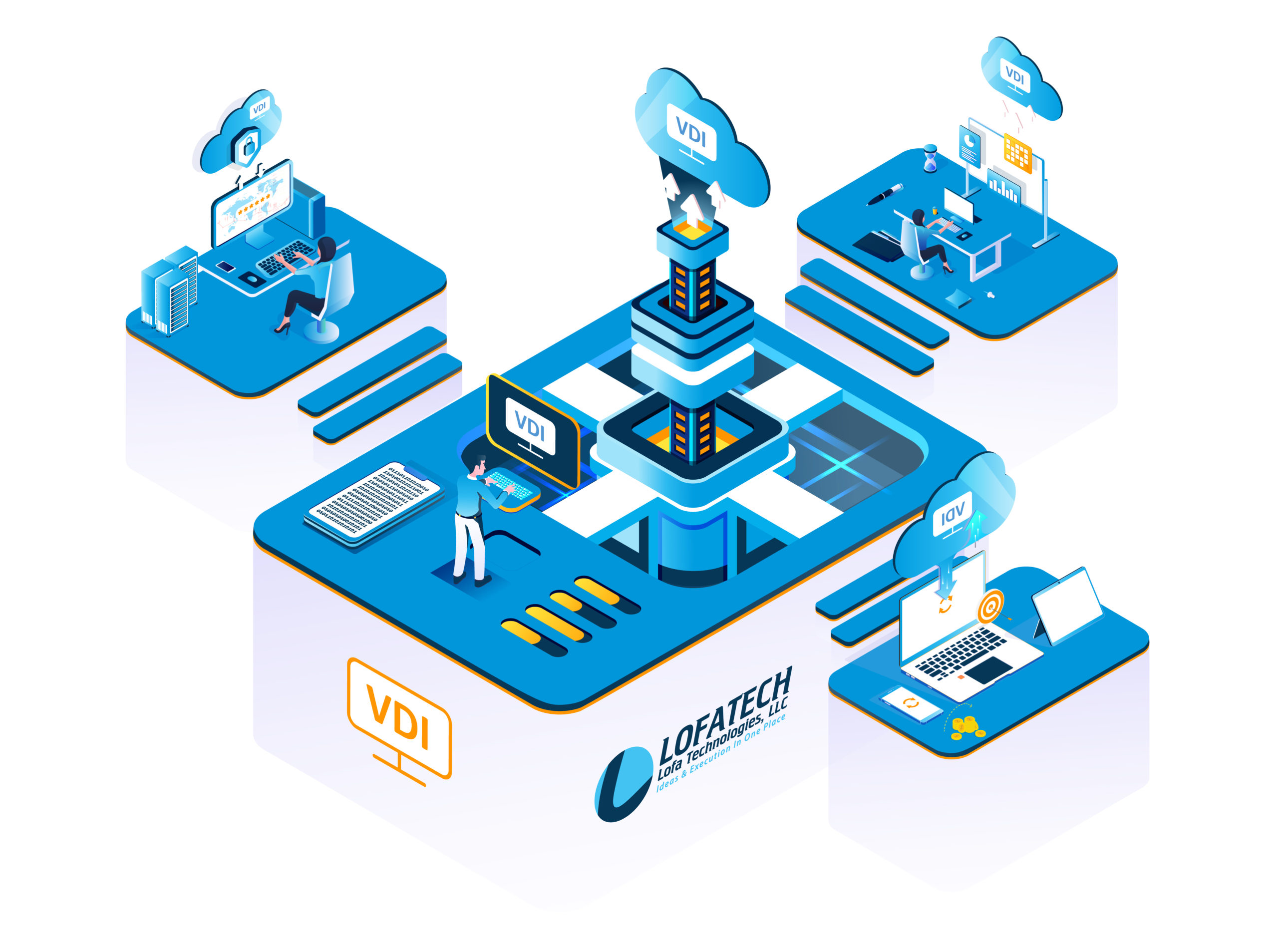CONNECT FROM ANYWHERE, WORK FROM ANYWHERE WITH LOFATECH VDI
enabling seamless employee productivity.

Virtual desktop Infrastructure (VDI)
What is Virtual desktop Infrastructure (VDI)?
Virtual desktop infrastructure (VDI) is a desktop virtualization technology wherein a desktop operating system, typically Microsoft Windows or Linux, runs on a server managed in a data center. The virtual desktop image is delivered over a network to an endpoint device, which allows the user to interact with the operating system and its applications as if they were running locally. The endpoint may be a traditional PC, thin client device or a mobile device. Access to those resources is delivered via encrypted protocols that secure the connection from the user’s device to the data center.
Benefits:

VDI provides the following feature sets:
Learn which Branded VDI Offers the Best User ExperienceRequests demo with 60days free trial





